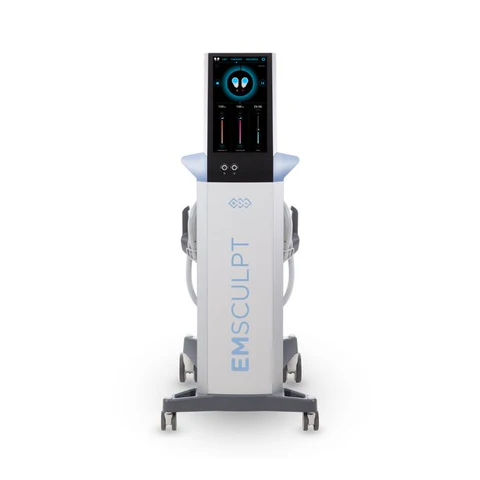
Disclaimer: The summarized information presented in this article is intended for informational purposes only and is not meant to be a substitute for professional medical advice. Readers are advised to consult with their healthcare provider before considering any procedures mentioned in this article. Regenerative medical procedures, while promising, may be controversial and must be decided upon carefully considering individual health circumstances. 
Regenerative medicine focuses on developing and applying new treatments to heal tissues and organs while restoring their functions due to aging, disease, damage, or defects. These new approaches go beyond disease management to support the body in improving itself to a state of well-being. From prenatal surgical intervention to lifelong degenerative diseases, the potential for regenerative medicine to treat a wide range of conditions makes it an exciting field with dramatic improvements in patient care.
This is the second article of a three-part series called Simplifying Regenerative Medicine explaining the concepts behind a few of the most novel breakthroughs in the field.
What is Body Contouring?
Body contouring is a medical or surgical procedure that aims to reshape areas of the body. While a variety of surgical options fall under the category of body contouring, these procedures have three primary goals: removing extra skin, eliminating excess fat, or reshaping/contouring the area. When body contouring is considered, it may mean that weight loss has not been effective in that dedicated location of the body or that loose skin has been created from significant weight loss.
Lipolysis
Lipolysis is a nonsurgical, minimally invasive type of body contouring that serves to break down subcutaneous fat cells. It is a natural process that occurs in our cells in the form of a metabolic pathway (fat is broken down into glycerol and fatty acids), which inherently decreases local fat deposits. Procedurally, lipolysis treatments rely on stimulating cell apoptosis (programmed cell death), particularly targeting fat cells and creating an overall reduction of fat deposits in the patient’s desired treatment area. Common body locations of fat it targets include (but are not limited to) the buttocks, thighs, abdomen, and hips.
Cryolipolysis is one of the few kinds of lipolysis options. Often referred to as “CoolSculpting”, it utilizes temperatures between 30° to 40° Fahrenheit to break down fat cells. The skin and other parts of the body are protected from the extreme temperatures because fat cells are more susceptible to effects of cold temperatures compared to other types of cells. Injection lipolysis involves a needle and a fat dissolving solution generating an inflammation among the fat cells. Shortly, the fat cells are expected to burst, enter the bloodstream, and are then excreted from the body through its organic physiological processes. This type of lipolysis may require local anesthesia and is not recommended for patients with loose skin. Laser lipolysis uses small blocks that are attached to an applicator pressed against the skin. The lasers within the handpiece are calibrated to a specific wavelength that penetrates the skin and melts fat cells below the surface without harming outer skin layers. Depending on the invasiveness of the applicator and its laser, incisions may be required to target fat cells beneath the skin. The last common form of lipolysis is radiofrequency lipolysis. Unlike the other lipolysis categories, there is no instrument making physical contact with the patient. Maintaining its approximate one centimeter distance from the skin, no structures or cells are impacted aside from the fat cells.
How Can It Be Used to Help Patients Today?
Non-surgical options, such as the various options lipolysis offers, have shorter recovery times in respect to the more invasive surgical procedures. On a surgical standpoint, a few examples of the invasive procedures include tummy tucks, face lifts, breast lifts, liposuction, and double chin surgery. When patients discuss their goals and concerns with plastic surgeons, the process becomes more straightforward. Where diet and exercise are not making a desirable difference, individuals may prefer non-invasive body contouring procedures to reach a certain shape. Certain surgical procedures may have specific contraindications compared to others. For example, a BMI under 25 or poor skin integrity may indicate a contraindication for a liposuction procedure.
Apart from a patient’s concerns regarding a certain procedure, body contouring is a component of regenerative medicine that offers patients who are close to their goals, but need assistance in improving stubborn fat, skin health, skin texture, or even strengthening local muscles. Cryolipolysis, laser lipolysis, and ultrasound lipolysis have been met with over 60% patient satisfaction across the North American subcontinent. In contrast to other cosmetic procedures, these patient satisfaction rates are considered “high” and “exceptional.”
Future Advancements
EMSculpt is a non-invasive body sculpting device that builds muscle and burns fat at an exceptional rate. Results can be maximized two to four months after a series of four treatments within two weeks, resulting in a 16% increase in muscle mass and a 19% reduction in zonal fat according to CT/MRI scans. Such quick results are brought by high-intensity focused electromagnetic energy (HIFEM) pulses directly into muscle tissue. The contractions that are created in response to these pulses can activate more muscle fibers than what one can achieve through exercise.
EMSculpt NEO is the next generation (FDA-cleared) device that combines the HIFEM technology with radiofrequency as well. Due to the additional radiofrequency component, its fat reducing qualities are performed at a faster rate considering it to be more effective than EMSculpt.
Ultherapy is a non-invasive, FDA approved procedure that lifts regions of the face such as the brows, neck, and chin. Ultrasound technology is used to heat up the skin and stimulate collagen production. Not only does this technology require no downtime, but it can actively reduce fine lines and wrinkles on the face.
As research and technology progress, the future of body contouring is predicted to offer enhanced results. Ultimately, these procedures provide tangible physical transformations while simultaneously paving the way for future innovations in cosmetic surgery.

